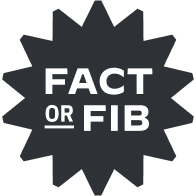This spice was once worth more than gold
Tuesday, June 4, 2024
 Make every day more interesting. Each day a surprising fact opens a world of fascinating information for you to explore. Did you know that….?
Make every day more interesting. Each day a surprising fact opens a world of fascinating information for you to explore. Did you know that….? 









| | Original photo by Mae Mu/ Unsplash |
| Cinnamon used to be more valuable than gold. | The woody, warming spice we sprinkle with abandon on top of holiday cookies, baked goods, and seasonal coffees is native to Sri Lanka, Myanmar, and India. But very few people knew where cinnamon came from when merchants first began selling spices throughout Europe, Asia, and Africa as far back as 3,000 years ago — and spice traders capitalized on that lack of knowledge to charge high prices. Harvested from the inner bark of Cinnamomum trees, cinnamon has been used for thousands of years as medicine, for religious practices and funerals, and in cuisine, but with a big price tag: It was once considered more precious than gold.
In an effort to conceal cinnamon's origins from competitors and explain the extravagant markup to customers, spice traders of the past provided elaborate backstories. By some fifth-century accounts, cinnamon traders asserted that collecting the spice was a dangerous task thanks to angry "winged creatures" that lived in the trees; cinnamon harvesters supposedly donned protective outerwear made of thick hides and risked their personal safety to collect a few measly pieces of cinnamon bark. Other vendors claimed cinnamon was transported from far-off lands by birds who used it as nesting material. (In this tale, harvesting cinnamon sticks from nests required a cow sacrifice to provide the birds with a meaty distraction.) Yet another story declared that cinnamon grew in dangerous, snake-infested valleys. Cinnamon's origins remained an enigma for centuries, but luckily for chefs and bakers today, the secret eventually got out thanks to global exploration brought on by a surging interest in spices. Now, the flavoring is a low-cost mainstay in modern pantries.
|
|
 | | Most of the cinnamon we buy isn't true cinnamon. | | |
|
|
| Most of the cinnamon we buy isn't true cinnamon. |  |  |
|
|
|
|
|
| Sticks of curled and dried cinnamon bark are called __. |  |
|
|
 | Numbers Don't Lie |
|
 | | Maximum height (in feet) of evergreen cinnamon trees | | 49 |
|
|  | | Cost (in U.S. dollars) of 1 pound of Ceylon cinnamon quills | | $27 |
|
|
|
 | | Approximate weight (in pounds) of the world's largest cinnamon roll | | 1,150 |
|
|  | | Amount of cinnamon quills (in pounds) used by Cinnabon annually | | 240,300 |
|
|
|
|
|
 | Scientists have recreated a cinnamon perfume Cleopatra may have worn. |
|
| What did our ancestors smell like? Archaeologists and historians have pieced together how numerous cultures ate, dressed, relaxed — in short, lived — but it's generally been harder to tell how people once smelled. Thanks to one archaeological find, however, we have a clue as to how Egyptians may have perfumed themselves, and perhaps even Cleopatra — a royal known for a cinnamon-laced scent so seductive, it's credited with attracting Julius Caesar. In 2012, archaeologists unearthed ruins north of Cairo suspected to be an ancient Egyptian perfume factory; that dig inspired a team of historians and perfume experts to recreate fragrances that hadn't been worn in nearly 2,000 years. Using recipes from ancient Greek texts that may have borrowed from Cleopatra's own formulas — a book of recipes that no longer exists, but was often referenced by other perfumers — researchers blended cinnamon, myrrh, and other herbs with olive oil to create a viscous fragrance akin to what ancient Egyptians once donned. While we'll never know for sure if Cleopatra wore this specific scent, the experiment gives us an olfactory link with history. | | |
|
|
|
|
|


posted by June Lesley at 5:07 AM


![]()
![]()
![]()
![]()
0 Comments:
Post a Comment
<< Home